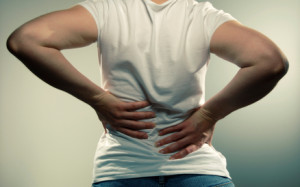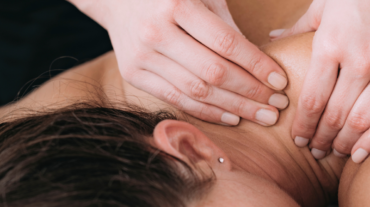While not all lower back pain can be called 'sciatica', all sciatic pain is essentially related to your lower back (even though it may not be felt there), and so both conditions will be discussed here to prevent any unnecessary repetition.
Back pain is the most common type of complaint in regards to concerns around muscle soreness and injury. If you haven't yet experienced back pain, you may do so in the future, so it's worthwhile to learn now how to treat it, and if possible, even prevent it from happening in the first place. Acupuncture and other modalities of Traditional Chinese Medicine (TCM) (e.g. cupping therapy) have shown extraordinary results, and acupuncture is especially popular because it can be used alongside any other therapy.
Generally speaking, your 'lower back' is anywhere below your rib cage, and includes your buttocks. Sciatic pain often radiates down one leg or the other, and (as mentioned above) may be felt in your leg alone. In TCM, lower back pain is said to be caused by excessive physical work, excessive sexual activity, pregnancy and labour, overwork, inadequate exercise, or by invasion of an external pathogen. Once the cause of your low back pain has been determined, a TCM diagnosis is then achieved (be sure to be diagnosed by a properly trained practitioner of TCM, even if it's only acupuncture you plan on receiving for treatment). TCM diagnosis of low-back pain generally involves Kidney deficiency ('Kidney' is capitalized to differentiate from the scientific definition of 'kidney'), stagnation of Qi (aka 'energy') and Blood, or retention of Damp-Cold in the area.
Kidney deficiency is seen in chronic cases of low-back pain, and can be caused by any of the above factors. For example, repeated invasion of Cold-Damp can eventually cause a deficiency of your Kidney organ system and lead to low-back pain. Accompanying symptoms often include a cold feeling in your lower back, pain relief when lying down but aggravated by sexual activity or work, as well as night-sweats, and even knee pain.
Damp-Cold invasion can be see in both acute and chronic cases of low-back pain. This type of pain tends to be worse in the morning, is relieved by the application of heat, and tends to worsen in damp or cold weather. With Cold and Dampness invasion, usually one or the other predominates, and so you might feel symptoms of Cold more than Dampness, or vice versa. For example, with Cold predominating usually you can feel better with moving around rather than resting, and heat will relieve your pain. With Dampness more prevalent, you may see some swelling, and may even feel a distinct heavy sensation in your back.
Lower back pain caused by the stagnation of Qi and Blood is usually caused by a muscular strain in acute cases, and is related to Kidney deficiency as the cause in more chronic cases. This type of stagnation is characterized by pain that is more sharp and stabbing in nature, and is worse with rest but also with excessive exertion. Low-back pain from Qi and Blood stagnation is often very tender, and you might find it uncomfortable both standing and sitting. This pain does not respond to changes in weather or the application of heat, and is marked by severe stiffness and rigidity.
Once diagnosed by a TCM practitioner, you will find acupuncture very effective for your lower back pain. The extent of time that it will take for treatment will depend on how long you've had your condition; acute cases tend to be treated more quickly than chronic ones. The selection of points the practitioner uses will depend on your diagnosis, although generally speaking points on your lower back will be chosen. In terms of your Western medical diagnosis, the exact cause of your low-back pain is not as important in TCM as the symptoms with which you present. Nonetheless, be sure to have seen a doctor to rule out any structural imbalances. While acupuncture can help you, it will give you piece of mind to know whether or not you have, for example, osteoarthritis or a prolapsed lumbar disc present.
For more information, and to obtain your own free TCM diagnosis, contact us.
By Richard Lobbenberg, Acupuncturist and TCM Practitioner
These links may also be helpful:
Case Study: Acupuncture for Acute Low Back Pain
Case Study: Acupuncture for Chronic Low Back Pain








